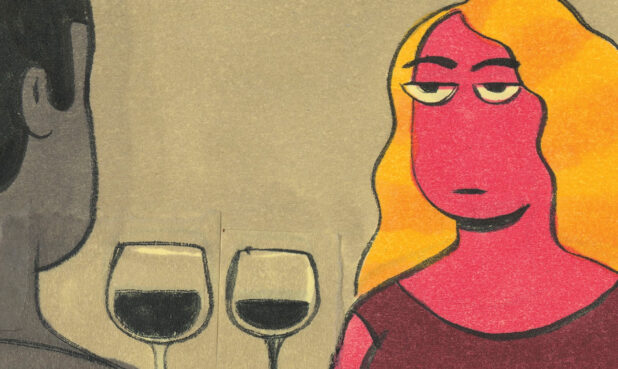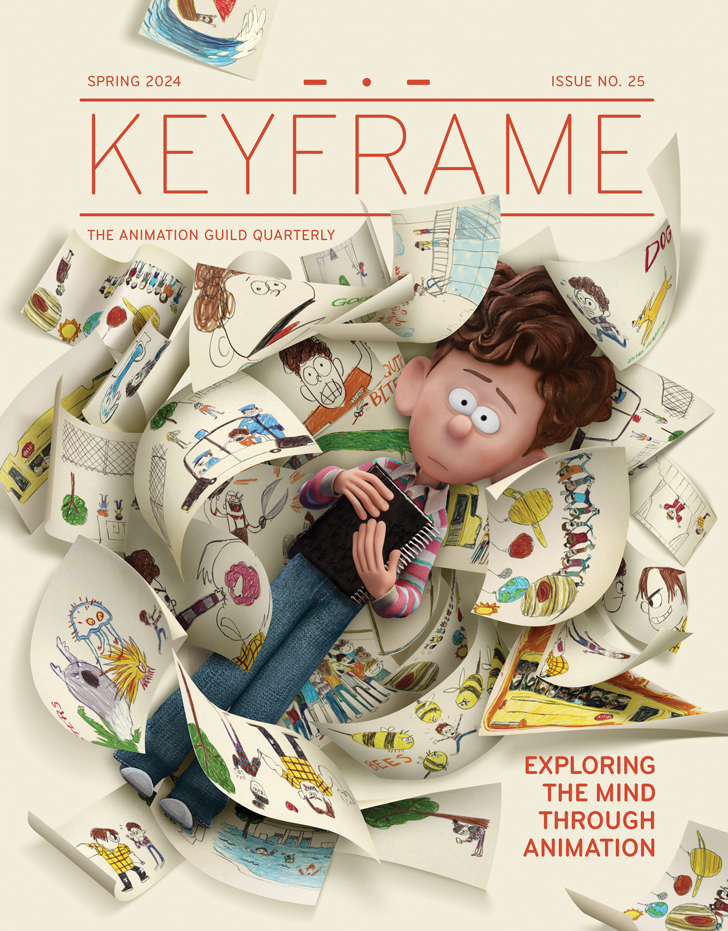Zach Smith loves fast food. So much so that he notes it on his website: “When I’m not drawing things for money, my pastimes include but are not limited to: eating fast food alone in my car.” Smith confesses that he probably eats way too much of it, but he also loves ‘90s fast food mascots and ‘70s McDonaldland collectibles. So it’s not surprising that the lead character in his new graphic novel, Dolphin Girl 1: Trouble in Pizza Paradise, works with her father in a fast food restaurant that is modeled on a Chuck E. Cheese. “I ate a lot of fast food growing up and it definitely inspired this book,” he adds with a laugh.
Smith’s first foray into animation began in middle school, creating stop motion videos with his parents’ video camera. This youthful hobby led him to the College for Creative Studies in Detroit where he pursued animation. Later, Smith moved to Los Angeles where he worked on the Mad Magazine show, creating shorts. More recently, he worked as a storyboard artist on the Netflix series We Lost Our Human and has started storyboarding on Nick Jr’s Baby Shark.

Between work and family life, how did he find time to squeeze in a graphic novel? He finished the book during quarantine, so with he and his wife both working, and two small kids, “there was a lot of staying up late and drinking coffee—cranking everything up after hours, basically.”
The idea for the Dolphin Girl graphic novel began when he heard about the formation of a new publishing company, Pixel + Ink, that was taking pitches from people in the animation industry with the hope of developing graphic novels. “It’s something I had always thought about doing… but I didn’t really know how to get into it.” He pitched five or six ideas, some of which were old TV show pitches that had been sitting around, and had been rejected by other networks. One of those was Dolphin Girl, an idea he’d been sitting on for almost 10 years. Smith retooled it to be more kid-oriented and focused on the relationship between a daughter and her not-so-perfect dad. “They really liked it and decided to let me go for it,” he says.
Inspiration for the graphic novel also came from ‘90s cartoons—highlighting banal suburbia and finding humor in the really mundane. “It’s a superhero book, but there’s not a lot of action,” he explains.
Dolphin Girl emerged as a character who was really smart, perhaps smarter than her own dad, who’s stuck taking care of her dad and helping to run their fast food restaurant, where they’re not only the mascots of the restaurant—hence their costumes—but are also actual superheroes who fight crime. Smith says wryly that the dad is based on people in his own life—including exaggerated aspects of himself. While the dad is goofy and lovable, he’s not very aware of what’s going on in Dolphin Girl’s life, and this dynamic between the two characters provides Smith with plenty of story ideas.

“When I write comedy, I usually just try to make myself laugh, or make my wife or my friends laugh,” he says. “I don’t really sit down and say: what would a kid like? I think about what would I have liked as a kid—and go from there.” While Smith’s aim is to entertain and amuse kids and avoid any heavy-handed lessons, the first book in the series does have an underlying message, a reminder that you don’t have to do everything by yourself, you can rely on the people around you for help. His wife is an elementary school teacher, so he often uses her as a sounding board to bounce jokes off and to get her opinion on whether kids would find something funny.
“I wrote an outline first and did some character design sketches and rough, thumbnail drawings—and from there, kind of fleshed out the whole book.” He found the process very similar to storyboarding except, “there wasn’t a huge bureaucracy that I had to go through. It’s basically just you and an editor working together. You have a lot more creative control over it.” Smith says the project has given him a creative outlet outside of work where he can express a more authentic version of his voice.
Smith advises creators to hold on to their original tone and voice. He recalls how early on in his career he thought he had to draw in a certain style in order fit into the industry. “Sometimes that can make you lose your authenticity,” he says, adding: “Even if you learn a new way to draw, try to hold on to that original tone and the voice before you were in the industry.”
Dolphin Girl 1: Trouble in Pizza Paradise is available in September and the second book in the series will be released next year.







.png)